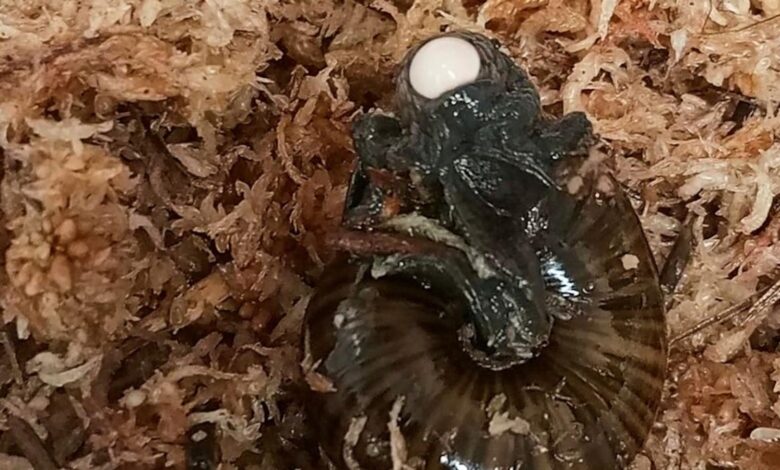A rare New Zealand snail is filmed for the first time laying an egg from its neck

WELLINGTON, New Zealand — The mysterious reproductive behaviors of a large, meat-eating New Zealand snail have finally been unveiled. The country’s conservation agency revealed on Wednesday that they have captured footage of the snail laying an egg from its neck for the first time.
The peculiar sight of what appears to be a miniature hen’s egg emerging from below the head of the Powelliphanta augusta snail, a species at risk native to New Zealand, was recorded at a facility on the West Coast of the South Island. Conservation rangers have been nurturing a population of these snails in refrigerated containers for almost twenty years in an effort to prevent their extinction.
The controlled conditions within the containers replicate the alpine climate of their original habitat, a secluded mountain on the South Island’s West Coast that has been devastated by mining activities.
Lisa Flanagan from the Department of Conservation, who has been studying these creatures for over a decade, expressed her astonishment at the discovery. “It’s incredible that after all these years of caring for the snails, this is the first time we’ve witnessed one laying an egg,” she stated.
Similar to other snails, Powelliphanta augusta are hermaphrodites, enabling them to reproduce while enclosed in a tough shell. Using a genital pore located on the right side of their bodies just below the head, the invertebrates engage in sperm exchange with another snail, storing the sperm until each produces an egg.
Each snail reaches sexual maturity after eight years, laying approximately five eggs annually. The gestation period for the eggs can exceed a year.
“Some of our captive snails are aged between 25 to 30 years,” Flanagan revealed. “They are the complete opposite of the common garden snail introduced to New Zealand, which reproduces prolifically with thousands of offspring each year and a short lifespan.”
The numerous species and subspecies of Powelliphanta snails are exclusive to New Zealand, predominantly inhabiting rugged forest and grassland environments where they face threats from habitat destruction.
These carnivorous snails feed on earthworms like noodles and are among the largest snails globally, sporting oversized, distinct shells in various earthy hues and intricate patterns.
The Powelliphanta augusta snail sparked public outrage and legal actions in the early 2000s when a coal mining proposal by an energy company jeopardized their habitat.
Approximately 4,000 snails were relocated from the site, with an additional 2,000 housed in refrigerated storage in Hokitika on the West Coast to safeguard the species, known for slow reproduction and poor adaptability to new surroundings.
Unfortunately, in 2011, around 800 snails perished due to a malfunction in temperature control within a Department of Conservation refrigerator.
Nevertheless, the gradual conservation efforts persist: as of March this year, the conservation agency reported nearly 1,900 snails and close to 2,200 eggs in captivity.





